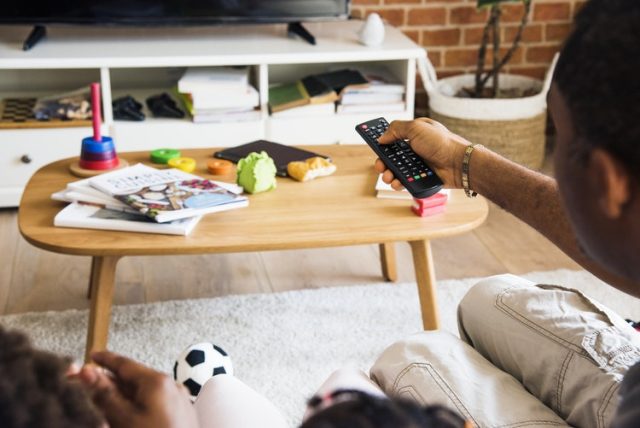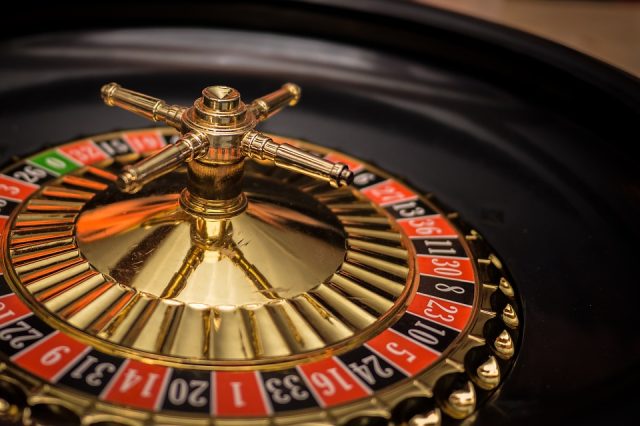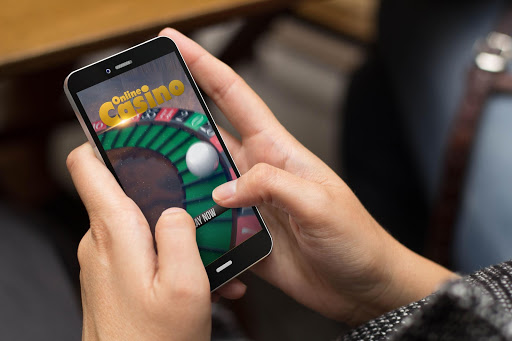It is rarely helpful to tell a shy person to “just be yourself!” Riffing on that frustrating exchange, clinical psychologist Ellen Hendriksen has written a book that she hopes will answer the question the anxious person usually asks in return: How?
Hendriksen received her doctorate from UCLA and today works at Boston University’s Center for Anxiety and Related Disorders. She is the author of How to Be Yourself: Quiet Your Inner Critic and Rise Above Social Anxiety, out last week from St. Martin’s Press, which she describes as “a book I wish I had when I was 20.”
The Verge spoke with Hendriksen about the most helpful techniques to combat social anxiety, daring to be average, and why most people’s social skills are just fine.
This interview has been lightly edited and condensed for clarity.
Let’s start with the basics. In the early chapters, you define social anxiety as “self-consciousness on steroids.” Can you be more specific about what that means? What is social anxiety?
Social anxiety is a perception that there is something embarrassing and deficient about us, and, unless we work hard to conceal or hide it, it will be revealed and we will be judged or rejected for it.
We can all relate to the experience of looking in the mirror and zooming in on a perceived flaw like a zit. There is a sense of wanting to hide that perceived flaw and that leads you to, say, throw on some tinted moisturizer. That feeling — that urge to hide — is the exact same feeling that one gets with social anxiety, except with social anxiety it’s about our internal self, about our personality or our social skills or simply who we are as a person.
The one thing I always like to add is that social anxiety is a package deal, and it often comes bundled with strengths like high standards and empathy and being helpful and altruistic. People who have social anxiety are often good listeners and conscientious and they work hard to get along with fellow humans. And those are all really amazing strengths that won’t go away even as people work on their social anxiety.
In the past few years, there’s been a lot of talk about introverts and extroverts, and people often confuse being introverted with being socially anxious. But, in fact, introversion and social anxiety are separate. How can people tell which is which?
Introversion is how you’re wired, whereas social anxiety gets in your way. Introverts get their energy by being alone or in small groups, while extroverts get their energy from larger groups of people.
Non-anxious introverts are perfectly happy to leave the party early, but people with social anxiety often leave because they feel so worried and want relief. Social anxiety is something that is holding you back due to fear instead of due to choice. A classic example is that students with social anxiety will forgo the part of their grade that’s based on “class participation.”
Ellen Hendriksen. Photo by: Matthew Guillory
And socially anxious extroverts do exist. I was talking just the other day to a man who is a teacher and a standup comic. He loves being in front of people, but he’s also simultaneously afraid that they are judging him. You can get energy from other people and still be anxious around them. Or you can get your energy by being alone and not be bothered by it at all.
So, let’s get to the meat of it. How do you overcome social anxiety?
Go forth and do. I often talk to clients who say, “I wish I could hit pause on the world and I could retreat and work on myself and gain confidence and remerge confident and be ready to live my life.”
That is backward. A nice analogy is that of mood and action. We often think we have to “feel” like doing something before doing it. We think we have to feel like going to the gym before going to work out. But if we lace up our shoes and go to the gym, often our mood catches up, and we’re glad we went. With confidence, it’s the same thing. We have to put action before feeling confidence because when we see ourselves doing challenging things, we start to believe we can.
You offer a few “magic questions” for socially anxious people to ask themselves before an event. How can these help?
The first trick is asking people to be really specific. Anxiety is often vague and says things like “everybody will hate me” or “something bad will happen” or “what if something bad happens?” So if we can specify, what exactly we’re afraid of, who exactly would “hate you,” sometimes that’s enough and we realize that our anxiety is not particularly credible and that the worst-case scenario that it’s spinning and is setting off our alarm bells is not likely. Part of that is asking what the odds of these worst-case scenarios really are.
The second question is “how bad would that really be?” and the technique is called decatastrophizing. That’s simply asking, “Is this truly a catastrophe? Would I die? Is this irreparable?” And the vast majority of the time, the answer is no.
The third is “how can I cope?” If we have a plan to either rectify the situation or take care of ourselves and move on, that will make us feel better knowing that we have a plan and we can care for ourselves regardless of what happens. That helps refute the two most fundamental lies of social anxiety.
What are they?
The first is that the worst-case scenario is a foregone conclusion and is definitely going to happen. And the second is that “I can’t deal.” When we avoid experiences, we don’t get the evidence to disprove those two lies of social anxiety. We don’t see our own capabilities. So these questions can act like this nice runway to help launch us into action and to go ahead and try to do those things that we’re a little bit scared of.
One piece of advice I found compelling was to “be brave for one minute.” What’s the thinking behind that?
The vast majority of social anxiety is anticipatory. Oftentimes, once we take the leap and are in the moment, we do feel anxious at first, but if we can resist the urge to avoid pulling the plug, the anxiety will naturally plateau and start to decline. But by avoiding anxiety, we never get to find that out. So, by committing ourselves to being brave for one minute and also dropping our safety behaviors, that’s where the learning occurs.
Tell me more about the safety behaviors.
This concept comes from the work of psychologists Lynn Alden and Charles Taylor. People who are socially anxious engage in “safety behaviors,” which are simply behaviors that trying to help you tamp down anxiety in the moment. For example, if you’re at a party and feel anxious, you hover on the edge of the room or you scroll on your phone or you might rehearse what you plan to say beforehand to make sure it doesn’t sound stupid. People generally do know what their safety behaviors are. And they do make us feel better, but it comes across as off-putting or rigid. They send the wrong message, and folks who are socially anxious don’t always realize that.
What do we gain when we drop the safety behaviors?
Alden and Taylor challenged people to drop their safety behaviors to see what would happen. When they did that, their conversation partner in this experiment rated the people who dropped these behaviors as more likable and more authentic. We become the way we are naturally with our closest friends.
These behaviors take up a lot of bandwidth. If you’re thinking about how you come across, and there is very little room left over to just be our authentic, friendly self. When we drop our safety behaviors, the gaps are naturally filled in with listening and curiosity and interest and we come across as more genuine and therefore our conversation partners like us more.
That seems related to a chapter in the book devoted to explaining why most of us don’t have terrible social skills. Why do you believe that?
With most people, it’s not so much that our social skills are lacking, it’s that our inhibitions get in the way and prevent us from using our social skills. We monitor ourselves and overread everything. “Oh, she just shifted in her seat, does that mean she’s bored?” Or, “I hope I don’t sound like an idiot.”
With all that happening, there’s very little room left over to pay attention to what’s happening in the moment or even to stand properly or to not spill our wine. So when we’re feeling particularly inhibited and anxious, it seems like we have no social skills, but we do.
Instead, try to turn your attention inside out, focus on anything except yourself. Look at who you’re talking to, ground yourself in your surroundings, listen closely to what is being said. And that turning of attention from the internal commentary can greatly reduce anxiety and help us make use of our skills that we naturally have.
Even in those cases, we’re still going to be awkward sometimes, right? You write about perfectionism in the book and also “daring to be average.” What does that mean?
Perfectionism as a term is a misnomer. It isn’t about being perfect. It’s about never being good enough. It social contexts, it’s all or nothing. So, unless we give a stellar performance, we are an abject failure. The answer is to simply lower the bar. It’s okay to have an awkward silence. Your social life isn’t a laser maze. If you make one mistake, alarms are not going to go off all around you. Daring to be average means daring to just be totally normal, which can help you relax and, again, relax into the skills we have.
Be well informed. Read The Verge.
This post originally appeared on The Verge.
https://getpocket.com/explore/item/a-psychologist-explains-how-to-beat-social-anxiety













/https%3A%2F%2Fblueprint-api-production.s3.amazonaws.com%2Fuploads%2Fstory%2Fthumbnail%2F88990%2Fd9e54cdf-6772-46b8-a8ff-89ca364eece3.png)

